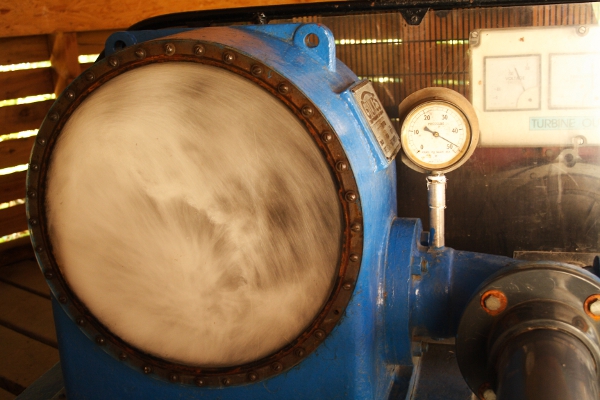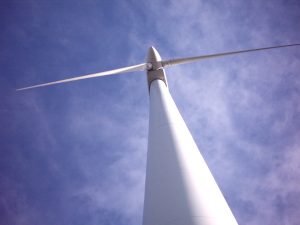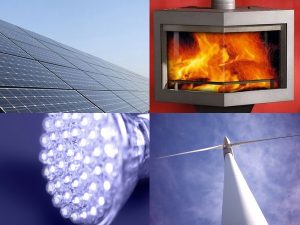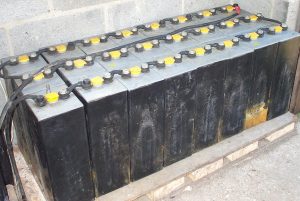Micro-hydro - introduction

“Nothing is softer or more flexible than water, yet nothing can resist it.” – Lao Tzu
Contents
What is micro-hydro?
A micro-hydro system converts the potential energy in a stream of moving water into electrical energy. The principles of hydropower are the same whatever the size of the system. Micro-hydro refers to small systems that can be installed by individual homes, businesses or farms.
A system consists of a turbine that converts flowing water into electricity (via a generator); an intake structure some distance upstream of the turbine, where some water is diverted from the stream to the turbine via a pipe; and an outlet to discharge the water back into the stream.
Power generated depends on the flow of water and how far it drops (head). Efficiencies of micro-hydro systems are typically over 70%.

Old-style watermill, originally used for milling grain, can be used to generate electricity.
History
Hydropower has been utilised since ancient times, via waterwheels for milling grain and lifting water for irrigation. Turbines that generate electricity were first developed in the late 19th century.
Early electrification of street lighting in many towns in the UK was down to hydropower, until the National Grid was rolled out, after which, many hydro plants were closed down, as their power output wasn’t up to grid specification (this isn’t the case nowadays – large and small hydropower plants are providing a lot of electricity to the National Grid).
How small-scale hydro works
Types of turbine
Pelton: typically used for high-head sites (large vertical drop, usually in the upper courses of rivers); operating head starts around 50m and can be over 1000m, with flow over 2000 litres / second. They’re like breakfast bowls mounted on a spindle, hit with a jet of high-pressure water.

Turgo: similar to the Pelton, but with the jet of water hitting the ‘breakfast bowls’ at an angle.

Francis: a propellor inside a tube, for medium-head sites.

Crossflow: typically used in medium-head locations, the blades are similar to cross-sections of a metal pipe, mounted on circular plates rotating on a shaft, so that the water catches them.

Kaplan: another propellor-type turbine, for low-head sites.

Archimedes screw: typically used at low-head sites in the lower courses of rivers, they involve a large spiral wound around a central tube. Used with a head from 1-10 metres, and up to around 20 cubic metres / second flow. Above 10 metres head, the screw can start to flex.

In most cases, a weir will need to be built across the stream at the point of water intake, with a fish pass to allow fish to move past the weir. A dynamo can also be added to an old-style water mill to generate electricity.
What are the benefits of micro-hydro?
There are all the usual benefits of renewable energy generation, in that it avoids the burning of fossil fuels, with their associated pollution and carbon emissions. Plus it’s one of the more efficient renewable technologies. The load (or capacity) factor on small hydro is typically around 45% (load factor is the ratio of energy output per year to the maximum output if the system works at full-rated capacity all year round). PV is typically around 8-9%, and a 250kW wind turbine is in the 18-22% range, depending on the site.
Cost per kWh delivered is site dependent. Costs are driven by things like site access, grid availability, distance to grid, what civil engineering works have to be done – for example, is there a weir already in place? Is there a fish pass? Do you have to construct a new fish pass, or a new weir completely?

Archimedes screw turbine. (image: Hydro NI)
Hydro can provide an income for farm families (selling electricity to the grid) and can give a cost advantage to small-scale industry situated in an old watermill converted to generate electricity.
In the 18th and 19th centuries, when weirs were built across rivers for watermills, they didn’t worry about fish passage; but now when they’re converted to generate electricity, there’s often a requirement in the planning approval to provide a fish pass. So converting old watermills helps fish passage up river valleys.

Kaplan turbine in manufacture, showing blades. (images: Hydro NI)
Water is flowing constantly, and the turbine can be producing electricity 24-7, for approximately 80% of the year – i.e. excluding the driest part of the year, typically the summer months. Therefore it’s ideal for running the pump of a ground source heat pump, and providing all your heating needs, as well as electricity.
They last much longer than any other kind of renewable energy systems. The life expectancy on a well-built, well-maintained system is three generations. Our advisor recently did some work on a system that was installed in 1890, and is still going strong.
Discussion of how electricity can be provided sustainably by small hydro schemes to remote communities in developing countries that are without grid electricity – rather than giant hydro projects.
What can I do?
If you live near a stream and you’re thinking of installing micro-hydro, first you have to think about where your intake would be, and do you own the land on both sides of the stream in that location (often a land boundary is in the middle of a stream, which means you can’t build a weir right across the stream if you don’t own the far bank). You really want your input to be as far upstream as possible. So for small gardens, it wouldn’t really work (unless you have a waterfall, which is unlikely), and for farms, the best location would the the upper boundary of the property.

You can find hydroturbine charts like this online, showing which turbines are suitable for different head (y axis) and flow (x axis).
You’ll need to control the water level, and ensure that you only divert a volume of water that keeps aquatic life safe. So you need to build a controlling structure, which is typically a weir across the river. There’s an intake on the side of the weir, with a way to prevent fish, debris or silt from entering the pipeline / channel. This all has to be calculated and engineered. There’s a lot of detail – for example the flow velocity through the bars of the intake screen mustn’t exceed 0.3m/s when the screen is 50% blocked with leaves, because that’s the escape velocity of small fish, who would be trapped against the screen and die.

From the top: high-head site (upper reaches of river); medium-head site (middle reaches); low-head site (lower reaches). (images: Hydro NI)
A pipe will run from the inlet location to the turbine, which can sometimes be over a kilometre in length. If you have an old mill site, the infrastructure is already there, and it’s just about how you best utilise it.
Designing a micro-hydro system is such specialist work, it will almost always involve the services of a professional, initially to conduct a feasibility study. You can do some research so that you can undertake some of the work yourself. Then you’ll possibly need the specialist a bit less, and save some money. A good place to start is the British Hydropower Association’s Guide to UK Mini-Hydro Developments. But your most important decision is probably which specialist to go with – so it might be good to talk with their previous clients. The British Hydropower Association has a database of companies.
Couple in Scotland buy an old watermill and become self-sufficient in electricity and heating from a micro-hydro turbine.
The important things you have to work out are the fall to your turbine, and the amount of flow in your stream, which will dictate the type of turbine as well as the size. Every hydro site is unique, in terms of head and flow, and will require a bespoke design. It’s very different from PV or small-scale wind, where you can buy an off-the-shelf product. Circumstances change even over small distances on the same watercourse, as tributaries joining the stream will change the volume of flow.
The hydro industry is heavily regulated. You won’t get approval unless you’ve demonstrated that you’re not going to have a negative impact. In the UK, you’ll need planning permission, and an abstraction licence from the Environment Agency that stipulates what percentage of the stream’s flow you can divert to the turbine, to protect the aquatic environment. Because of this, it’s not unusual for turbines to be out of operation for about 20% of the year – the hottest, driest days. As you’re going through the planning process, the planners will liaise with other stakeholders, including fisheries, plus anglers, canoeists and anyone else who might want to comment on the application.

Micro-hydro turbine in operation. (image: Hydro NI)
There are very few moving parts, so apart from a few bearings that need to be greased monthly, and clearing leaves from the intake screen, there’s not much else in the way of maintenance. The electronic control panels also have components that will fail from time to time, and need to be replaced – but manufacturers tell us that spare parts represent half of one percent of their sales. Not much planned obsolescence in the hydro world.
Specialist(s)
Thanks to Gerard Murphy of Hydro NI for information.
The specialist(s) below will respond to queries on this topic. Please comment in the box at the bottom of the page.
 Gerard Murphy of HydroNI, has many years’ experience of assisting clients to successfully develop hydro power projects of all types and sizes. Gerard and his business partner Trevor provide a complete service from initial enquiry through the entire project to final commissioning and ongoing maintenance. Many of their clients become close friends.
Gerard Murphy of HydroNI, has many years’ experience of assisting clients to successfully develop hydro power projects of all types and sizes. Gerard and his business partner Trevor provide a complete service from initial enquiry through the entire project to final commissioning and ongoing maintenance. Many of their clients become close friends.



